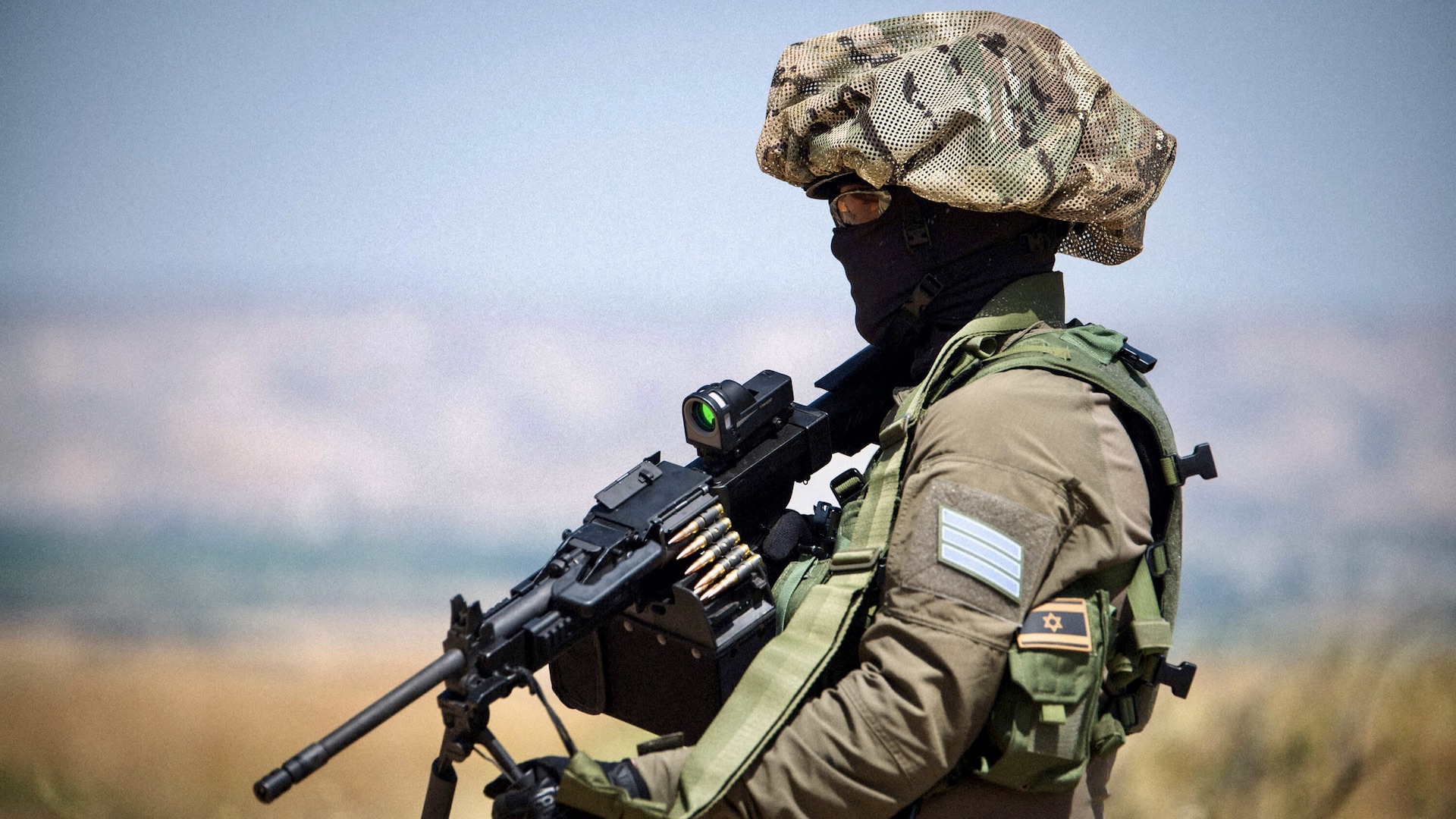After the outbreak of war between Israel and Hamas in early October, the odd-looking ‘chef’s hats’ or ‘clown hats’ of the Israeli Defense Forces (IDF) have once again been on display. While a seemingly strange piece of kit to the uninitiated, what is known as the Mitznefet has been used by the IDF for decades. The headgear serves a number of purposes on and off the battlefield for IDF troops.
The Mitznefet was first issued by the IDF in the mid-1990s, at which time Israeli troops were engaged in conflict with Hezbollah militants in southern Lebanon during the South Lebanon conflict. The exact origins of the Mitznefet before this remain murky, however. IDF units were known to create their own ‘chef’s hats’ prior to the mid-1990s, often cut from equipment concealment netting and two-piece mesh over-suits sported by reconnaissance and sniper units.

While their description as ‘chef’s hats’ or ‘clown hats’ is fairly self-explanatory, use of the term Mitznefet to describe them has historical connections. The word Mitznefet can be translated in several ways to mean ‘wrap,’ ‘bonnet’ and ‘turban.’ Moreover, a turban known as the Mitznefet was worn by the Jewish High Priest in the Holy Temple in Jerusalem during the Second Temple period, approximately 586 BC-AD 70, from which the word’s modern meaning derives.

The headgear is primarily used for camouflage. Much larger in size than the helmets they cover, they are designed to break up the highly-recognizable rounded shape of helmets, especially amongst the asymmetry of nature. While other helmet covers often retain the overall helmet shape, the Mitznefet distorts their shape entirely. Even in camouflage colors and patterns, rounded helmets stick out in natural surroundings, making the Mitznefet useful for the concealment of those wearing it. This is especially important for long-range snipers trying to pick out a target to hit.
They are also used to prevent any light sources from reflecting off the user’s helmet, as they are typically made from mesh material. This is less of an issue now than it once was, but regardless, it’s another potential benefit. The Mitznefet can provide protection from the sun for the wearer, and is easily adjustable to provide maximum head coverage — a critical benefit in the hot deserts of the Middle East. It can also be worn without a helmet underneath.

Modern-day iterations are produced by various Israeli tactical gear manufacturers, the most prominent of which is Agilite. Agilite’s Mitznefet is made from military-specification nylon mesh and includes military-specification plastic hardware produced by the American company ITW Nexus. Its coverings are fully adjustable to all helmet sizes and also feature tethers to connect them securely to helmets.

The manufacturer’s ‘chef’s hats’ come in a military-specification MultiCam color palette, introduced in 2013, which, according to the company, “enhances camouflaging capabilities in various environments” against enemy snipers. They are reversible — allowing the wearer to switch between camouflage for different kinds of combat environments, such as the desert or wooded locales. According to Agilite, the reversible mesh is made possible by a special printing process developed by Israeli camouflage specialists Fibrotex.


It should be noted that for the benefits they offer, the headgear is relatively cost-effective. Agilite currently lists its Mitznefet at just $49, and other online retailers list the same product at under $70. For large military orders, that price is likely substantially less.
While most famously sported by Israeli soldiers, the Mitznefet has been used by other militaries in the past. Polish forces have been seen with the headgear, while a small number of them have allegedly been supplied to Ukraine by Israel previously, according to Russian state media.

Outside of IDF usage, the Mitznefet — or at least headgear bearing a striking resemblance to it — has most notably been worn by members of the armed branch of Hamas, known as Izz ad-Din al-Qassam Brigades (IQB). Versions of the headgear have been sported by IQB troops at ceremonies and parades as well as during operations. However, IQB coverings tend to be made from thicker fabrics, matching the camouflage patterns of the wearer’s uniform.

Beyond this, the Mitznefet has not been widely adopted by other militaries around the world — at least in part because other forms of helmet camouflage that serve similar purposes are used. That’s not to say that Israel’s ‘chef’s hats’ couldn’t be adopted by other militaries, however.
So there you have it, now you know exactly what these interesting pieces of kit are used for as well as their historical connections.
Contact the author: oliver@thewarzone.com
